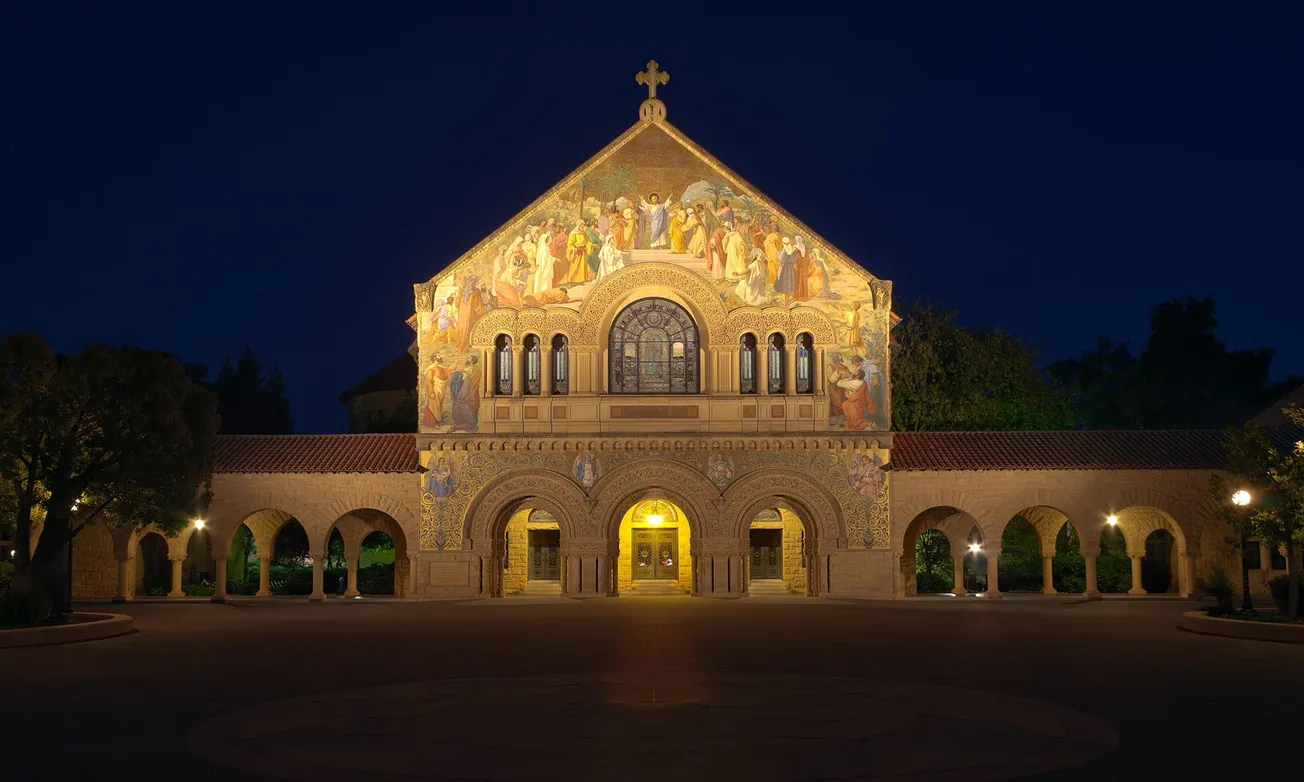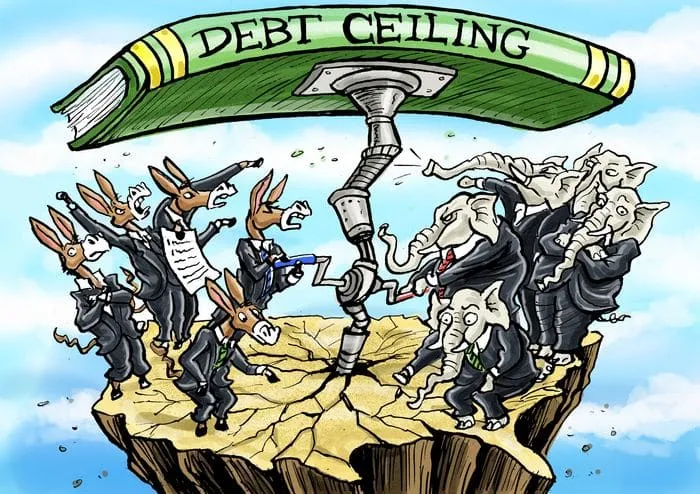Table of Contents
Princeton has Old Nassau. The center of Yale’s campus is a library. Harvard has no buildings of note. Stanford is different — we have a church.
For over a century, one of the most beautiful churches in the country has been at the heart of the Stanford campus. Jane Stanford famously said, “While my whole heart is in the university, my soul is in that church.” The purpose of its placement is clear from Jane Stanford, as she believed that an education divorced from religion and with no attention to character would be of no value to the individual or society at all. Without acknowledging the existence of an objective good and moral framework, no good can be brought about. Jane Stanford built Memorial Church so we would never forget that fact. Too late.
The practical translation of the biblical call to know, love, and serve God is to know, love, and choose the good, where the good is an objective true north to which we all aspire. The first two are prerequisites. One cannot choose the good if one does not first know what the good is and love it. Of course, the good divorced from God is nothing at all. It can be loved, but only with self-imploding results.
While the Romanesque architecture and every square foot of Byzantine mosaic are stunning, one of the most overshadowed parts of the church is right on its front facade. Sometimes literally in the shadow of the “Sermon on the Mount” mosaic, four mosaic angels sit on the four pillars that form the archways.
These four angels are named Love, Faith, Hope, and Charity. But in the Christian Tradition, the three theological virtues are Faith, Hope, and Charity. Love is not a Theological Virtue — but it has become Stanford’s favorite secular one.
Confusingly, the three theological virtues are also often referred to as Faith, Hope, and Love. So, is Love the imposter or Charity? The Catechism of the Catholic Church defines Charity as “the theological virtue by which we love God above all things for his own sake, and our neighbor as ourselves for the love of God.” Love is willing the good of the other, but, as stated, the good is ill-defined without God, which is why the Catechism also refers to charity as the form of all the virtues. Adding, however, Love as a virtue in addition to Charity draws a distinction between them. This is no small statement. It splits love from divine love, and therefore claims that there is some legitimate love that is not oriented in some ways toward God.
This distinction is not trivial, because the very notion of love is intrinsically tied to metaphysical truths and untruths. We are not simply called to love. We are called to love good and hate evil, as detailed in the psalms and reiterated hundreds of years later by the theological giant Augustine of Hippo. This is an objective moral standard that is not only our reality but whose acknowledgement is necessary for a functioning society, as even a Kantian categorical imperative would suggest.
Looking at the ancient roots further clarifies the issue. Charity directly descends from the Latin word caritas. This word is inscribed in countless churches and included in countless hymns. What would never appear in a traditional church with Latin inscriptions is the Latin word amor, meaning some kind of romantic love. Caritas is the Latin rendering of the Greek agape, which was reinvented by the Christian tradition to mean a divine love. In English, we do not have a colloquial word for caritas, or agape. Even the word charity has been bastardized to exclusively mean giving to the disadvantaged.
Like Stanford, our country and our society claim to be, if not secular, non-denominational, and reject objective standards for a paradigm of treating every idea with radical equality. The delicate question of the American experiment is whether liberalism and tradition will work together, merely coexist, or rip each other apart. It seems that as Americans, we never forget to tout liberalism. After all, is it not our freedom that differentiates us from the Nazis, the Soviets, North Korea, and the CCP? But, just as tradition without freedom is tyranny, liberalism as a rejection of objective grounding is a fundamentally self-defeating paradigm. Unfortunately, we live in that paradigm.
While Jane Stanford and the church builders likely understood Love’s proper theological context, the modern viewer, devoid of such a context, does not. As with every secular grounding, Love loses its basis in truth and goodness, and is instead subject to the whims of its interpreters. Like every secular grounding, it becomes an idol to be worshipped, and not to be questioned. We cannot serve two masters, and so Love becomes our Golden Calf, and Charity lies shattered and forgotten like the tablets of 3500 years ago. Times have changed, but people are exactly the same. As Adrian Vermeule put it, “all human conflict is ultimately theological.”
The problem is not just that Love is a secular virtue. Love is the secular virtue. What we love and hate as a society defines who we are as a people. Love is not grounded in objectivity, so love turns into a passive liberalism where everyone must tolerate the behaviors and preferences of others. Soon, toleration is not enough. Everyone worships something, so our new god morphs into toxic empathy. Love must be rooted inherently in objectivity. When ripped from its foundations, to love means not to love good and hate evil, because without objectivity, what is good, and what is evil? This new love teaches to love good and evil equally — a paradox doomed to fail.
That Love is the god of the secular cult, meant to replace God, is reflected in the very linguistic identities we find in front yards and on bumper stickers. Consider that in the Old Testament, the revered name of God is Yahweh. “I am who [I] am”. God is existence itself, the only being in the world that defines itself. Today, the secular Left does not proclaim the name of God. Instead, we have “Love is Love”. Love is the secular god that defines itself.
Perhaps the worst part is that modern-day secularism paradoxically descends directly from religion. The secular call to love is, in fact, a perversion of the religious call. Weak-hearted compassion and so-called empathy are caricatures of the real Christian values of friendship, mercy, and service. Social justice, after all, is a Christian call co-opted by the minions of Marx and Foucault. Granting all thoughts, lifestyles, cultures, traditions, values, religious practices, and social norms equal value erodes the foundation of our civilizational skyscraper. Today, we don’t need an anti-American foreign actor to bring down our towers. We do it all by ourselves.
It is imperative to remember that great societies do not die of unforeseen circumstances. They are not conquered, their sand in the cosmic hour-glass does not simply run out. Societies die by suicide. One cannot universally love and respect the values of others without slowly killing the values within. In the aftermath of 9/11, patriotism hit all-time highs. Al Qaeda could bring down buildings, but not the proverbial foundation that those buildings stood on.
At Stanford, our building is Memorial Church. It will always be the soul of the campus, where the fate of the university lies. Fortunately for us, the facade will always offer us a reminder and a question. What do we love, and what will we do at Stanford to achieve it? Our future of prominence and unparalleled excellence depends on that question. The beautiful and haunting fact is that this future lies entirely in our own hands. The Good is objective, and that which is worth loving has never changed. We can accept this fact, or die Judas’ hopeless death.





